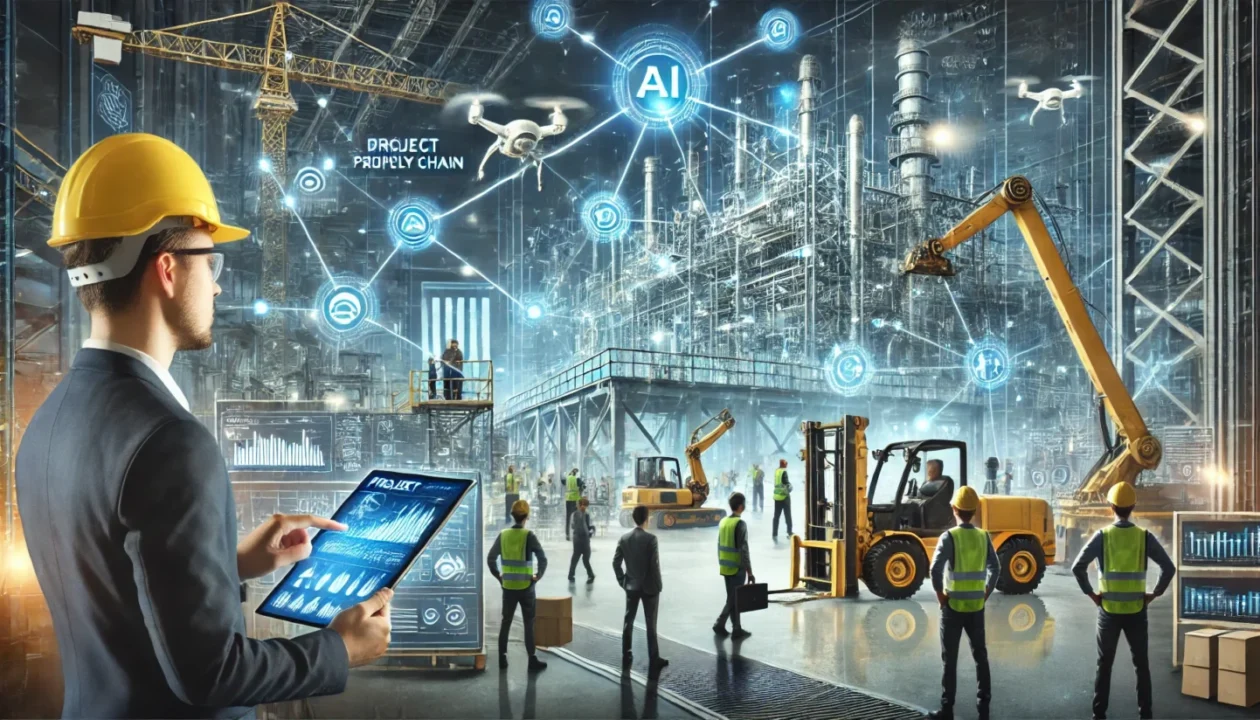Navigating the Hype and Reality of Generative AI in Industrial and Project Supply Chains
Blog Post

The integration of Generative AI (GenAI) into supply chains is a topic of increasing interest and speculation. Recent surveys indicate that a significant portion of supply chain leaders—nearly two-thirds—are planning to implement Generative AI within the next year, allocating about 5.8% of their budgets to this technology. This trend is particularly evident in industrial and project supply chains, where the potential for GenAI to streamline complex processes and improve efficiency is highly anticipated. However, navigating the Hype and Reality of Generative AI requires a careful approach to balance expectations with practical implementation.
The Promise of Generative AI in Industrial Supply Chains
In industrial supply chains, GenAI can play a crucial role in optimizing production schedules, forecasting demand, and enhancing maintenance operations through predictive analytics. For instance, the ability to generate and analyze vast amounts of data allows for more accurate and timely decision-making, which is essential in environments where precision and efficiency are paramount. Additionally, Generative AI can assist in quality control by identifying defects and inconsistencies in products, thus ensuring higher standards and reducing waste.
Imagine a scenario where a manufacturing plant uses Generative AI to predict equipment failures before they happen, thereby reducing downtime and maintenance costs. The AI could analyze sensor data from machinery, detect anomalies, and alert maintenance teams to potential issues. This proactive approach not only enhances operational efficiency but also extends the lifespan of equipment, resulting in significant cost savings.
GenAI’s Impact on Project Supply Chains
Moreover, project supply chains, which often deal with unique, large-scale projects, also stand to benefit from the Hype and Reality of Generative AI. In these contexts, GenAI can be used to develop more effective project timelines, resource allocation strategies, and risk management plans. For example, it can generate comprehensive project simulations to predict potential challenges and suggest mitigation strategies. This proactive approach can significantly reduce project delays and cost overruns, making it a valuable tool for project managers and stakeholders.
Consider a construction project where Generative AI is used to simulate different construction scenarios. The AI can identify potential bottlenecks, optimize resource allocation, and propose the most efficient sequence of tasks. By doing so, project managers can avoid common pitfalls and ensure that the project stays on schedule and within budget.
Challenges and Considerations in Generative AI Adoption
However, the adoption of Generative AI is not without its challenges. One major concern is the risk of “hallucinations,” where the AI generates incorrect or misleading information. This is particularly critical in industrial and project supply chains, where inaccurate data can lead to costly mistakes. Furthermore, there is a need for robust cybersecurity measures to protect sensitive information from potential threats.
Therefore, it’s essential to recognize that while the Hype and Reality of Generative AI holds tremendous promise, it also requires careful implementation. Companies must ensure that their AI systems are trained on high-quality data and regularly monitored to prevent errors. Additionally, integrating GenAI with existing systems can be complex, requiring significant investment in both time and resources.
Conclusion: Balancing the Hype and Reality of Generative AI
In conclusion, while the potential of Generative AI in supply chains is immense, organizations must approach its implementation with caution. It is essential to prioritize scalable and practical applications, ensuring that the benefits outweigh the risks. By doing so, companies can harness the power of Generative AI to enhance productivity, improve decision-making, and ultimately achieve their strategic objectives.
The journey of understanding the Hype and Reality of Generative AI from hype to reality will undoubtedly be a challenging one, but for those who navigate it successfully, the rewards could be transformative. As we move forward, it’s crucial to stay informed, be adaptable, and remain focused on the long-term goals of efficiency and innovation in the supply chain sector.
For more insights and updates, follow us on LinkedIn. Stay connected with our latest thought leadership and industry news!

